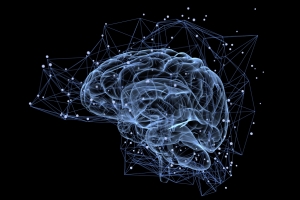Exercise: A Magic Pill To Help Protect The Brain From Cellular Pathology

Julia Basso – PhD
The opening statement in a recent article in the Journal of the American Medical Association reads, “Pathology is not destiny” (Kuehn, 2015). This statement is based off of a huge prospective study that followed 2,566 healthy, older adults (ages 65 years and up) for around 16 years. During the study participants were tested on a variety of cognitive tasks. These included tests of short-term memory, episodic memory (i.e., capacity for remembering autobiographical events), processing speed, and motor ability. As the years went by, the participants were periodically tested to determine whether they showed cognitive decline or even progressed to mild cognitive impairment (MCI) or dementia.
In a large number of participants (over 1,200), the scientists were able to analyze their brains for signs of disease pathology after death. They found something very interesting. Some individuals with blatant signs of neuropathology, including plaques, tangles, or Lewy body formations, were totally cognitively intact, showing no signs of cognitive decline. In fact, the typical cellular issues that we attribute to neurodegenerative disorders like Alzheimer’s and Parkinson’s disease only accounted for about 50% of cognitive issues. The scientists determined that what protected these individuals from this “unhealthy” brain tissue was their healthy lifestyle choices – exercise being a major factor. What exactly are these healthy life choices doing to our brains? The authors suggested three possible options.
Related Article: Exercise and Alzheimer’s Disease
Exercise, the Brain, and BDNF
A major player in the fight to protect the brain from aging is brain derived neurotrophic factor, or BDNF. BDNF is a protein that helps support the growth of new neurons and enhances connections between neurons. BDNF is involved in cognitive functioning. Increasing levels of BDNF in the brain causes improvements in the ability to learn and remember information. Excitingly, by exercising, we can increase levels of BDNF in the brain. This exercise-induced increase in BDNF helps create new neurons and causes increased connections between these neurons – an effect that makes you smarter. BDNF also protects the brain from cellular death, which may be why studies have found that high levels of BDNF are protective against Alzheimer’s disease and other dementias.
Exercise, the Brain, and VEGF
Another key protein is vascular endothelial growth factor or VEGF. The brain is surrounded by vessels and arteries, which deliver blood and provide it with the nutrients it needs to function. VEGF causes the growth of new endothelial cells or the cells that make up the vascular system. Exercise increases levels of VEGF both in the body and brain, and by doing this, creates a stronger, healthier vascular system. By having more blood flow to the brain, we create a better functioning brain. In fact, more blood flow has been associated with the growth of new neurons, and in turn, a better capacity for learning and memory. Having increased blood flow in areas of the brain that are compromised by aging may serve as a defense mechanism, protecting the neurons that are damaged by plaques and tangles.
Related Article: Exercise Increases Neurons in the Brain
Exercise and the Immune System
The final area that was discussed was the immune system. The immune system is inherently involved in our ability to fight off disease and clear the brain of cellular debris, keeping our bodies and brains healthy. Genetics plays a role in the immune system, and certain individuals have genetic variants that make their immune system stronger than others. As an example, individuals with a genetic variant in their CD33 receptors (which are receptors expressed on immune cells), have an impaired ability to clear amyloid from their bodies/brains. As a result, these individuals have an increased accumulation of plaques, one of the main markers of Alzheimer’s disease. Though these genetic variants exist, exercise helps increase the strength of the immune system, even increasing the numbers of immune cells to help protect the brain from accumulations such as plaques and tangles that possibly cause dementia-like diseases.
Related Article: Increase Your Immune System Through Exercise
These are only three examples of positive things that exercise is doing for the brain. Clinically, scientists and physicians are interested in an exercise mimetic or a pill that can deliver these benefits. A major problem with this idea is that exercise is causing a plethora of changes in the body and brain. Creating a pill that does all these things is practically impossible, at least in our current scientific milieu. Current medicines normally have one, or possibly two, targets, such as receptors, neurochemicals, or cell types. Therefore, creating a pill that, like exercise, targets many different neurochemicals at many different levels of the body and brain is out of the scope of current technologies.
Conclusion

The findings from these large, longitudinal studies are certainly exciting. These results suggest that we can actually protect our brains from cellular damage. In addition, we can stave off cognitive decline by simply engaging in health behaviors like exercise. Other lifestyle choices that the article recommended are healthy dietary choices and engagement in rich social interactions. Until that pill is created, all we can do is exercise!
References:
Kuehn, B. M. (2015). The brain fights back: new approaches to mitigating cognitive decline. JAMA, 314(23), 2492-2494.
You Might Like:















